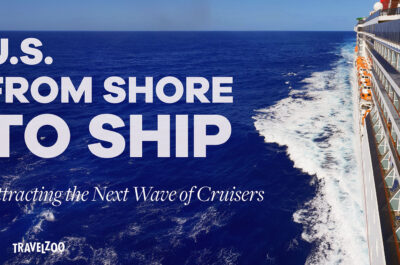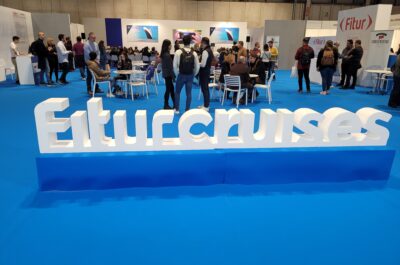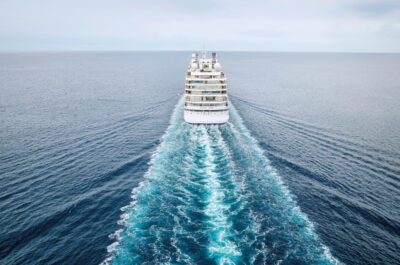Cruiseships… Large high-tech vessels that float in the oceans! The cruise industry together with the aviation industry are the pioneers in presenting innovation services and products. Dr. Stavros Sindakis exlpores how the competitive environment of cruises encourages the development of innovation.
Who doesn’t love to go for a cruise? As the global economy recovers, more people make plans to book cruise vacations for 2014. According to the Cruise Lines International Association (CLIA), 21.7 million guests will use the services of the Association’s 63 cruise line members this year; 400 thousand more passengers than in 2013. It is noteworthy the fact that even though Americans hold the 52% of the global passenger share – according to CLIA’s cruise passenger source market overview -, Scandinavians have a 5-year increase of 185% with the Australians following, showing a rise of 130% in total passenger numbers.
How do cruise line companies meet this increasing demand though? In this challenging and turbulent business ecosystem, they seem to choose investing on new vessels as well as on enhancing their current service offerings and on developing new ones. The world’s biggest lines have planned to build 36 new ships until 2018, adding a total passenger capacity of 70,738, worth of $16 billion. Christine Duffy, CLIA President and CEO, mentions, “The global cruise industry is at an exciting juncture with strong consumer interest in cruising and significant cruise line investment in a diversity of exciting ships that travel to the most exotic locations in the world and offer one-of-a-kind vacation experiences.” As it happens with the other sectors of the Travel and Hospitality Industry, the Cruise Line sector concentrates on improving technology to decrease the cost of operations and its environmental impact by adopting energy-saving technologies (e.g. electric engines, hydro-dynamically efficient hulls, and new lighting systems), aiming at reducing the ships’ emissions. More cruise lines choose for their ships to use shore’s power installations, enabling them to turn off the engines of the vessels, reducing air pollution. Carnival Cruise Lines has installed compact fluorescent and LED bulbs across its fleet, saving $100,000 annually in energy costs per liner. Likewise, Celebrity Cruises and Royal Caribbean install solar panels on their newest ships to power LED lights and elevators as a mean to produce energy and improve their ecological footprint.
This enhances the argument that the cruise sector embraces technology, updating the ships with innovative traits and integrating the latest gadgets into services in order to increase efficiency and to provide advanced services to passengers. Several examples come into light, including the facial recognition technology, which searches through the pictures of the passengers taken on-board, and places the right pictures to the right personal photo albums. Similarly, the Share Recognition Cameras, which use biometrics to count and analyze the foot traffic in the dining venues, sending this information in real time to interactive boards, assisting with this way the thousands of passengers to locate the shortest queue for the buffet. Another top innovation is introduced by Royal Caribbean, called ‘Royal Connect Smart Phones and Wristbands’. The world’s largest cruise ships, ‘Oasis of the Seas’ and ‘Allure of the Seas’, offer to passengers high-tech devices (i.e. Smart Phones and Wristbands), which use Radio Frequency Identification Technology (RFID), enabling parents to keep track of their children on-board, pinpointing tag locations on the smart phone’s map display or sending alerts to those wearing the wristbands. The latter ship has also established ‘Guest Kiosks’, in which guests can use to check their emails or calendars, make restaurant reservations or even confirm flight reservations and print out their airline boarding passes.
Other cutting edge innovations include Carnival Cruises’ 5D Theater, where, apart from the 3D film, viewers will have the chance to feel the wind or see the water dripping from above while watching a movie as well as having seats that move, shake, and vibrate. Nevertheless, Celebrity Cruises’ ‘Smart Glass’ in the exclusive suites of the ‘Celebrity Reflection’ is considered a top innovation, allowing guests to take a shower while enjoying the sea view. The electrochromatic technology adopted in these selected rooms turn the walls of the shower into semi-transparent glass simply by walking into the bathroom, as the sensors installed activate the ‘Smart Glass’ automatically, while retaining guests’ privacy. Likewise, Royal Caribbean’s new cruise ship ‘Quantum of the Seas’, offers passengers a mock skydiving experience within the boat, whereas the new ‘Royal Princess’ ship by Princess Cruises has built a gangplank-like SeaWalk, made of glass, allowing passengers to look straight down to the ocean while they walk. In addition, the SeaView Bar on Deck 16 “extends over the waves” and offers breath-taking views. Similarly, Celebrity Cruises collaborates with mixologists to create cocktail menus and drinks that are offered at selected bars throughout its fleet, advertising this effort by noting, “The new craft cocktails blend vintage-style liqueurs with fresh ingredients, organic juices and the finest artisanal spirits, resulting in a combination of new-school libations and updated old-school favorites.”
This appealing and innovative sector creates also new customer segments focusing on younger generation travelers, developing novel services to satisfy their needs, such as active vacations at sea with extreme and soft-adventure excursions, longer stays in ports for added sightseeing and high-energy on-board facilities. For instance, Aqua Expeditions, a small luxury line that cruises the Amazon, organizes soccer games with the locals of the river town that the ship has docked. Moreover, Disney’s ‘Virtual Portholes’ and ‘Enchanted Art’, at Disney Cruise Line, are systems that enrich passengers’ experiences. While the former features ‘Magical Portholes’ that give guests a real-time view of the outside environment of the ship using high-definition cameras, while “an animated Disney character flies or swims by”, the latter consists of interactive pieces of art throughout the ship that animate when passengers stand ahead of them.
The aim of these innovation activities is to create experiences for customers, promote sustainability, and differentiate firms in this fierce competitive environment. As Sherri Eisenberg, editor of Bon Voyage digital magazine, stresses, “By creating these flashy experiences, they can draw passengers.” Soon cruise lines’ customers will be able to use their smart phones and tablets to open their cabin door, access daily events and activities, view restaurant menus, and get notifications for deals and specials from shops and restaurants as they pass by.
Share your experience:
- What kind of novelty do your customers expect to experience from the cruise line companies in the future?
- What do you think is the lesson that the cruise line sector can learn from the hotel industry?
Dr. Stavros Sindakis is Assistant Professor of Innovation Management at Bangkok University, and member of The Institute for Knowledge and Innovation – South East Asia. His principal research interests lie in innovation and development of new technology-driven and customer-oriented products and services as well as in the exploitation of entrepreneurial opportunities in the knowledge intensive industries.
Dr. Sindakis participates as speaker in many international conferences, and is leading several research projects, funded by Governments and University institutions. He is also the co-author of 4 books on such topics as entrepreneurship, analytics, innovation and excellence-driven sustainability, social-ecological innovation, and customer-driven innovation. His main academic contributions relate to Innovation and Enterprise Excellence, Organizational Sustainability and Growth, Coopetition and Entrepreneurship.

































































































































































































































